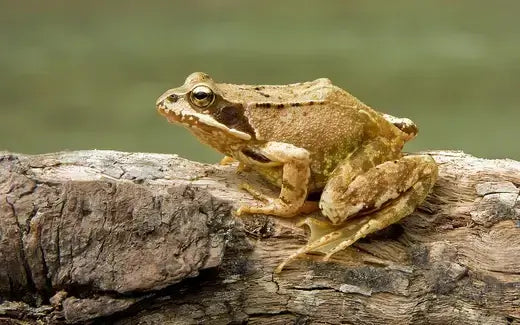Frogs: An Intriguing Connection with Humans
Frogs, those small and often colorful amphibians, have long held a fascinating connection with humans throughout history. This unique relationship encompasses scientific exploration, cultural symbolism, environmental indicators, and challenges. Frogs have left an indelible mark on our lives, from fairy tales to scientific studies.
Cultural and Symbolic Significance:
Frogs have played roles in various cultures and mythologies around the world. In some ancient civilizations, they symbolized fertility and transformation due to their life cycle that involves metamorphosis from tadpoles to adult frogs. In Egyptian mythology, the frog-headed goddess Heket was associated with childbirth and fertility.
Furthermore, frogs often appear in folklore and fairy tales. The classic fairy tale "The Frog Prince" tells the story of a frog that transforms into a prince after being kissed by a princess. This tale teaches valuable lessons about looking beyond appearances and embracing differences.
Scientific Interest:
Frogs have captured the attention of scientists for centuries due to their unique biology and behavior. Their permeable skin, which allows them to absorb water and oxygen directly, has greatly interested researchers studying skin permeability and physiological adaptations. Frogs also exhibit diverse reproductive strategies, from laying eggs in water to giving birth to live young, making them valuable subjects for studying reproductive biology and evolution.
Indicator Species:
Frogs are considered indicator species, meaning their presence or absence in an ecosystem can provide valuable insights into the overall health of that environment. Their permeable skin makes them sensitive to changes in their surroundings, such as pollutants or contaminants. Thus, declines in frog populations can signal environmental disturbances, leading researchers to investigate and address potential issues.
Medical Advances:
Frogs have contributed to significant medical discoveries. One of the most notable contributions is using the African clawed frog (Xenopus laevis) in pregnancy tests. In the mid-20th century, these frogs were used to test urine samples for the presence of the hormone human chorionic gonadotropin (hCG), which increases during pregnancy.
Additionally, frogs have been essential in advancing our understanding of embryology and development. The transparent eggs of certain frog species allow scientists to observe the early stages of development, offering insights into standard processes across many species, including humans.
Challenges and Conservation:
Unfortunately, frogs face significant challenges, particularly in habitat loss, pollution, climate change, and a devastating chytridiomycosis disease. Chytridiomycosis, caused by the chytrid fungus, has led to widespread declines and extinctions of amphibian species globally. This crisis has prompted conservation efforts to protect and conserve frog populations.
Frog Advocacy and Education:
Numerous organizations and individuals work tirelessly to raise awareness about frogs and their conservation. Amphibian-themed events, such as "Save the Frogs Day," aim to educate the public about the importance of amphibians in ecosystems and the threats they face. Zoos and aquariums often feature frog exhibits, offering visitors a chance to learn about these fascinating creatures up close.
Personal Connections:
For many individuals, frogs hold a special place in their hearts due to childhood memories of catching tadpoles or hearing their distinctive calls at night. Frogs' charming appearances, unusual sounds, and unique behaviors often make them beloved creatures in the eyes of both children and adults.
Conclusion
The relationship between humans and frogs is multifaceted and intricate. From cultural symbolism to scientific advancement and environmental indicators, frogs have impacted various aspects of human life. While challenges like habitat loss and disease threaten their populations, efforts to raise awareness and promote conservation continue to be vital. As we learn more about these captivating amphibians, our appreciation for their role in the natural world grows, reinforcing the interconnectedness of all living beings on our planet.

